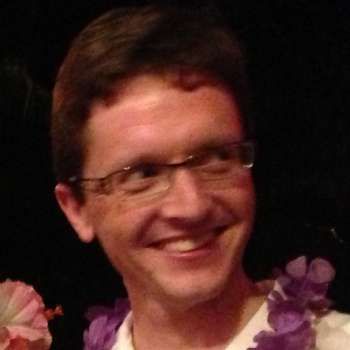In part two of the Ring, Wagner introduces the first human characters, the twins Siegmund and Sieglinde, who are also the first truly sympathetic figures in the drama. Whereas in Das Rheingold desire is expressed in the form of lust or greed, in Die Walküre we get multiple portrayals of love, whether in its romantic (the incestuous bond of the siblings), compassionate (Brünnhilde for Siegmund and Sieglinde) or familial (Wotan for Brünnhilde) guises. The music Wagner came up with in response to this has made Die Walküre the most popular part of his tetralogy. Whether in recognition of the emotional potency of the original narrative or for other reasons, Frank Castorf was less interventionist here than in Rheingold. The production largely preserved the relations between the characters, and thus risked less and succeeded more fully.
Aleksandar Denić created another visually attractive and highly detailed set, this time an integrated series of farm buildings with barns, silos and a tower. Subsequent acts saw some of the outer timbering stripped away, so that the tower, for instance, was a series of open platforms by Act III. Act I is all about the developing relationship between the siblings. Johan Botha is known for his mellifluous voice rather than his acting skills, but on this occasion he captured something of Siegmund’s mixture of defiance and tenderness without losing his vocal finesse. The famous cries of “Wälse” were maybe a shade lacking in testosterone; they certainly were less self-indulgently extended than is frequently the case. Perhaps Botha drew inspiration from how Anja Kampe played his on-stage sister/wife: she was utterly committed throughout, and reached a pinnacle of excellence in her brief scene in Act III. The two were vocally well-matched through the love scene, and warmly appreciative of the other at the final curtain.
The only other character present in Act I is Hunding, played here by a top-hatted and tail-coated Kwangchul Youn. Although lacking the sheer physical size of Matti Salminen, his entrance was memorable for the fact that he carried a head on a spear, on which he subsequently hung his hat. His vocal entrance was equally authoritative, but in his quieter moments he showed that he was capable of more than just stentorian volume.
While the first part of Act I relied solely on the actors, the use of projected film resumed as Hunding voiced his final threat to Siegmund, with the cameras following the former to bed. Footage of him tossing and turning uneasily later gave way to mysterious historical footage of industry – the sight of Pravda in one shot retrospectively revealed this to take place in the early USSR. The most jarring film sequence saw an older man with an Amish-style beard talk (silently) on the phone to his cake-eating mistress, who tried on a dress. Even if Act II revealed the man to be Wotan, it was an unnecessary distraction during Siegmund’s gorgeous “Winterstürme” solo.
After a thrilling Prelude from the orchestra, Act II introduced Wotan and Brünnhilde, shortly followed by Fricka. Claudia Mahnke gave a terrific performance in the last-named role, despite her costume suggesting she had strayed in from a production of Aida. Vocally resplendent and appropriately waspish, she made Wotan’s capitulation a foregone conclusion. Her text declamation was particularly exemplary. Wolfgang Koch gave a convincing rendition of Wotan’s great monologue, although the unnecessary business of packing up a small trolley that Brünnhilde was given to do rather detracted from the atmosphere singer and orchestra were creating, at times still and tense, at others dramatic and despairing.
The great dialogue scene between Brünnhilde and Siegmund saw the former ten feet up in the tower, while the latter leaned against the base of the structure, lit dramatically from below in the manner of Caravaggio. The fight at the end of Act II took place inside the barn, and so could only really be seen on the screen; for once, the hand-held camera added value, giving the stand-off and combat an almost expressionist quality. Musically, the latter stages of this act were first-rate.
Act III opened with a spectacular sequence: against an orange, smoke-filled sky, revolutionaries ran up to the top of the structure before being mowed down by gunshots. The mysterious slogans daubed on various buildings were in Azerbaijani, I have subsequently discovered, so presumably some historically distant political conflict was being obliquely referenced. The Valkyries assembled in various different national dresses, a nice touch suggesting the internationalism of their mission bringing the gallant war-dead to Valhalla. The ensemble singing was very tight, although their occasional necrophiliac interactions with the corpses were unnecessarily sensationalist.
The lengthy scene between a now beardless Wotan and a dress-wearing Brünnhilde worked well, although other renditions have moved me more. Catherine Foster was a fine, free-voiced Brünnhilde throughout: my only quibble was with her top notes, which sometimes were a shade under pitch. The real heroes throughout the evening were the orchestral players under Petrenko: from the surging storm in the opening Prelude through to the flickering Magic Fire music at the end, they were unremittingly excellent.




